Building Student Confidence to Think Like Designers
At Sinclair Elementary School, a communications-focused /STEM magnet school in Houston, TX, all 560 K-12 students in Bradley Quentin’s STEM Lab are building confidence with creative computing. After seeing some of his students’ creations on Twitter, we asked Bradley if he could give us a look inside his practice.
From Tech to Tool
Bradley found out about Scratch when he was teaching third grade. His third graders loved making the Scratch cat move, meow, and spin in endless circles. At first, Bradley saw Scratch “as a fun add-on to the computer science lessons my student were doing in Code.org.” When Bradley moved to his new role as a STEM lab teacher, he chose to use Scratch and Scratch Jr. as primary components of his curriculum.
Over time, Bradley came to see Scratch as a tool learners can use to express themselves. “It’s in league with your crayons and colored pencils and hot glue gun and all that.” His newfound perception led to different ways of incorporating Scratch in the classroom. “I used to say things like ‘now we’re going to do this thing in Scratch,’ but now I say things like ‘now we’re going to do this project.’ Students know that Scratch is one of the things they can use—and they often jump to it as a tool.”
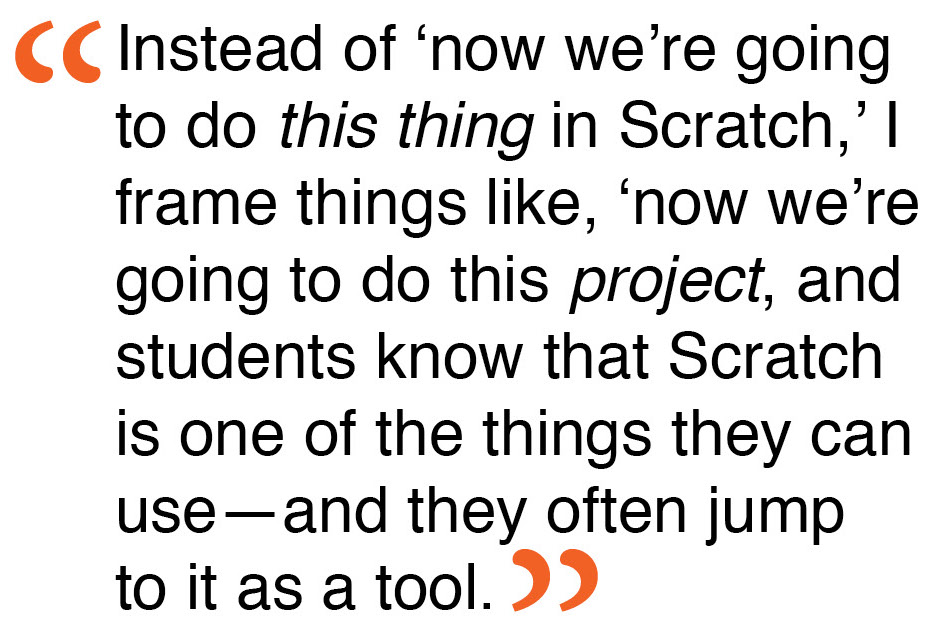
But being creative can be a challenge, especially when students have been socialized towards getting the right answer. Bradley discovered that many students struggled with open-ended or multiple solution tasks during his first year as the STEM lab teacher. He decided to intervene by incorporating more self-directed, interest-driven activities.
And it’s working. Over time, students in Bradley’s class are becoming more sure of themselves as creators, and it’s showing in the questions they ask. “They’re moving from questions like, ‘Is it supposed to be like this?’ to ‘How do I make this thing I want to do happen?’”
Thinking Like Designers
With more autonomy as makers, students are empowered to think like designers, embracing the process of brainstorming, planning, iterating, and reflecting. “I stress to the students throughout the year that success in the lab is not only about the final product, but the process as well.” And Bradley supports this approach through scaffolds and protocols such as design journals for brainstorming and planning, group critiques for iterating, and rubrics and Google forms for reflecting. At the end of each unit, this constellation of documentation provides ample information for assessment—both self-assessment and grading.
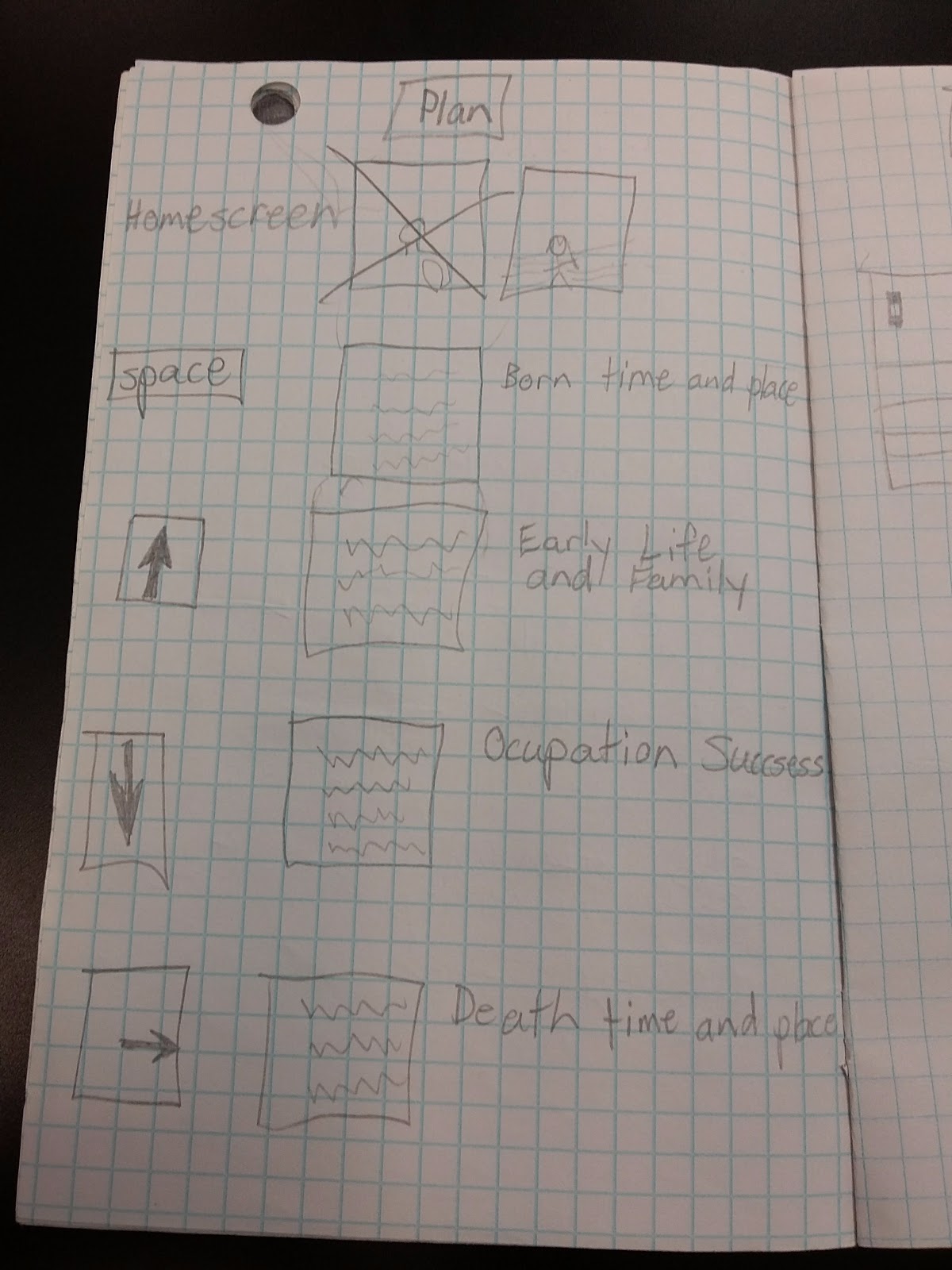
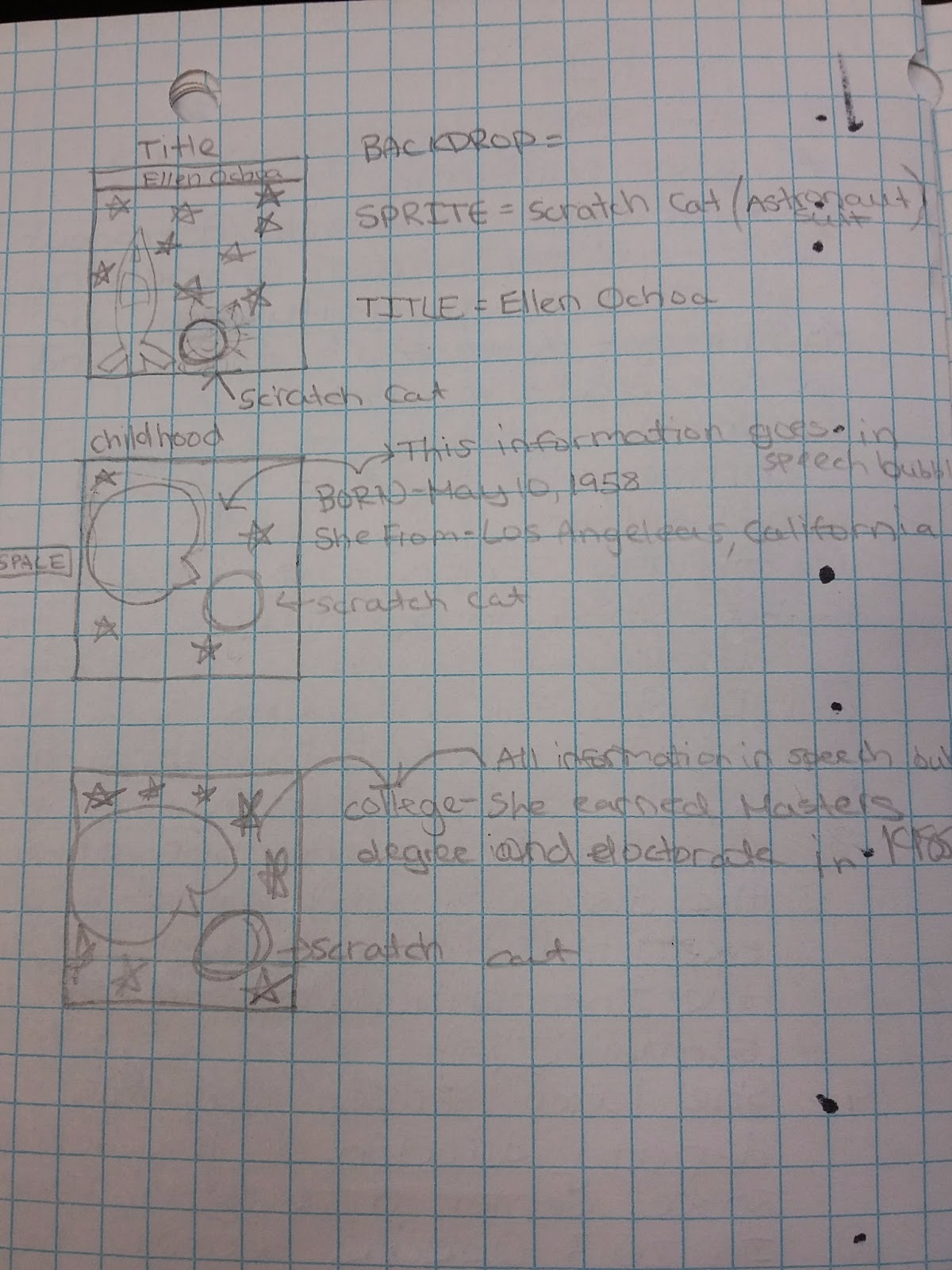
In their journals, students make drawings and diagrams to plan their projects.
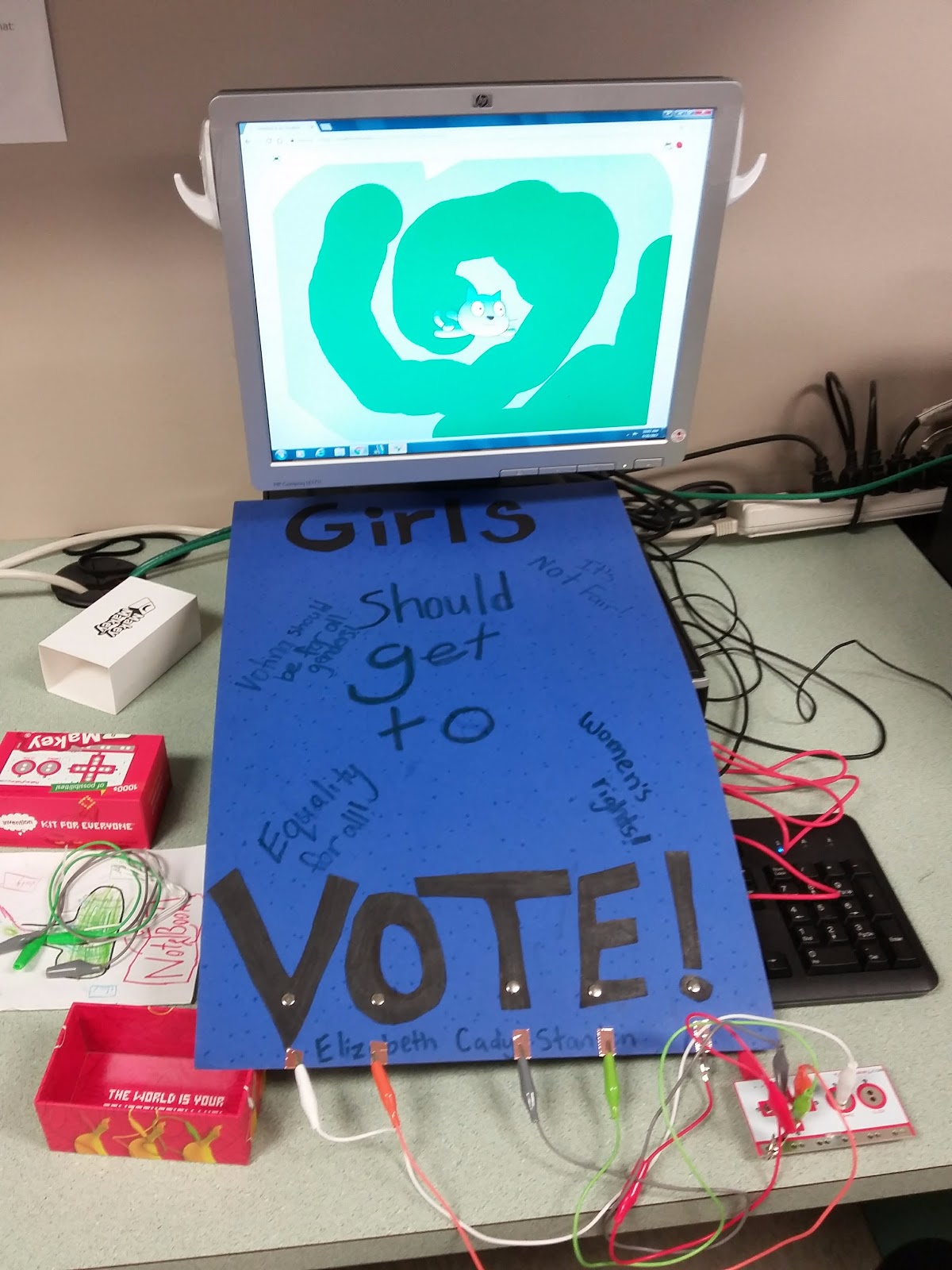
For a recent 4th grade biography project on influential women, students used Scratch and Makey Makey to create an interactive display, like this project on Elizabeth Cady Stanton.
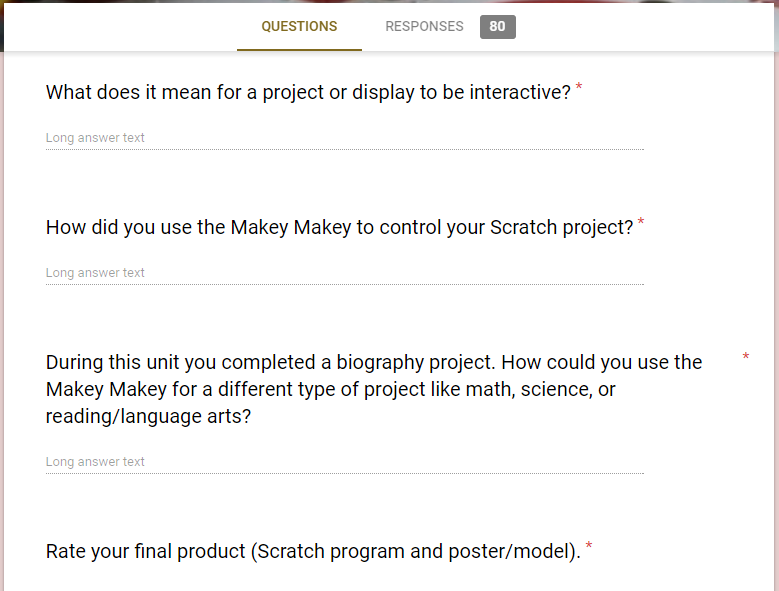
Example Google Form prompts from an Elizabeth Cady Stanton project.
A Scratch Approach to the Classroom
After working through a design challenge to create sculptures out of recycled stuff, students write museum tags describing their work, share their work on a gallery shelf, and talk about their work in a studio-like critique. These processes, which mirror the creative and reflective process in the Scratch online community, have become routine in Bradley’s classroom,
Bradley’s understanding of Scratch as not only a digital platform—but a way of thinking—has engendered a classroom environment where creative possibility abounds.
To read more about Bradley's STEM lab, check out his blog: Mr. Quentin's Center for Advanced Awesomeness

